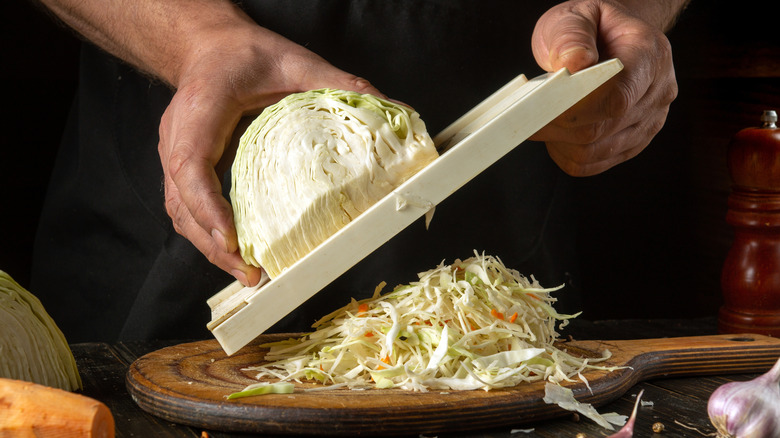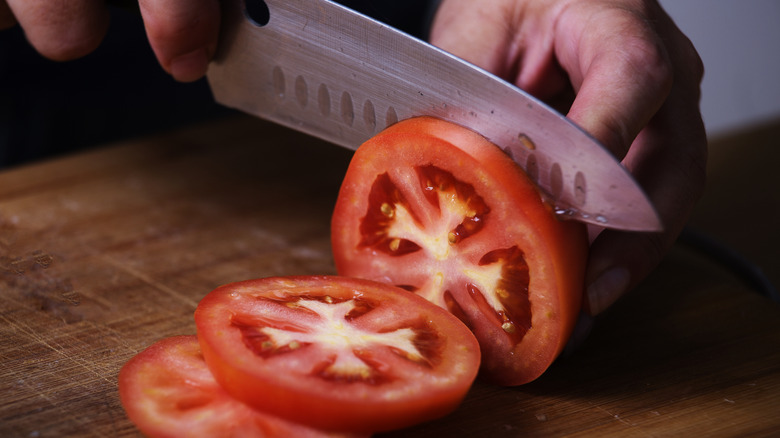Do You Really Need A Mandoline For Perfectly Sliced Vegetables?
The mandoline is perhaps one of the most polarizing kitchen tools out there. While many chefs and home cooks alike swear by the single-blade slicer for quickly cutting vegetables and making ultra-thin slices of meat, many people find it too intimidating to keep one on hand. Fortunately, there's no need to run out and buy a slicer to make restaurant-quality vegetables at home. Food Republic asked Estiatorio Milos founder Costas Spilidias for his advice on how to prep vegetables like a pro without a mandoline.
"Any pointed knife will do," Spilidias says. "A razor sharp one, not flimsy and not too heavy, as you want to use the tip of the knife to slice and not to chop." To get precise cuts every time — and to keep your fingers safe — try using the claw method when slicing your veggies: Using your non-dominant hand, hold the outside of the vegetable steady with your thumb and pinky, and curl your other fingers in slightly so that the tips press down firmly onto the top of the vegetable. With some practice, this method can help you find a fluid slicing rhythm, which, according to Spilidias, is far more important than speed.
"A continuous cut helps make slices of the same thickness," he says. "It is also very important to check the slices as you go, [as] you may need to adjust the slant of the knife to have a line as straight as possible." For the most accuracy when slicing, pinch the heel of the blade between your index finger and thumb, and wrap your remaining fingers around the handle. This chef-approved technique is key to having greater control over your knife and preventing any slippage.
Pro advice for choosing the best chef's knife
A chef is only as good as their tools, and choosing a good quality chef's knife will make all the difference in the kitchen — whether you're a professional or not. There are three main factors that make a good knife: a comfortable and ergonomic handle, a balanced weight distribution between the handle and the blade, and the quality of the steel used to make the blade itself.
When it comes to blades, stainless steel knives are widely considered to be the most beginner-friendly option due to their rust-resistant qualities. However, many professionals — including OG celebrity chef Julia Child — prefer the durability of carbon steel knives, which can retain a sharper edge longer than their softer-steeled stainless counterparts. The biggest downside to carbon steel is that it can begin to form rust spots within minutes, making them less than ideal for casual cooks looking for a knife that is low maintenance.
Of course, if you're going to invest in a top-quality knife, it's just as important to purchase a good cutting board to protect the longevity of your tool. Since plastic cutting boards are known to rapidly dull the edge of even the sharpest knives, chef and TV personality Alton Brown recommends purchasing a hard maple cutting board to extend the lifespan of your knife.


